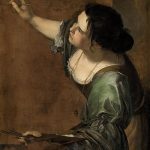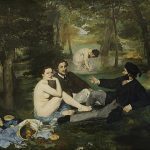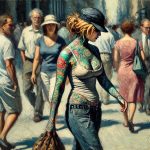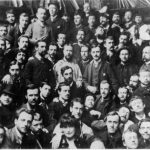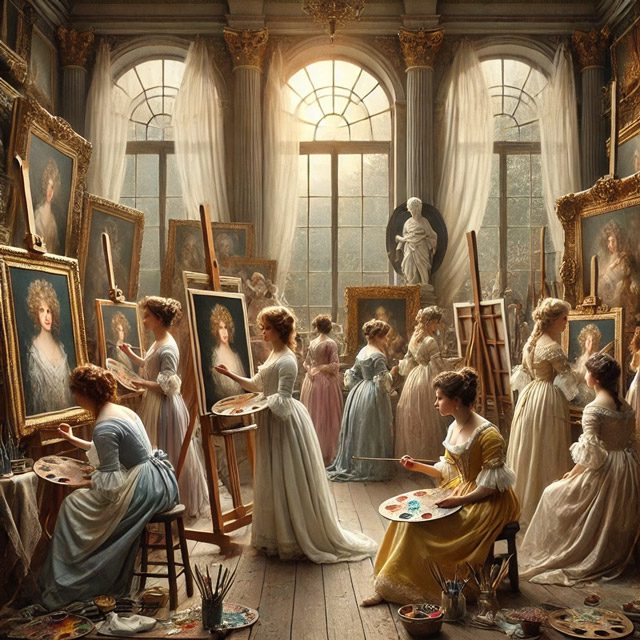

The history of art has long been painted with a male-dominated brush. For centuries, many believed that the 18th century, in particular, was a time when women were sidelined, their talents hidden behind societal restrictions. However, a closer look reveals that women artists of this era not only existed but also made significant contributions to art history. These forgotten women are now being rediscovered, and their genius and creativity are finally receiving the recognition they deserve. Let’s take a journey through time to celebrate the women who defied expectations and left an indelible mark on the art world.
Barriers to Women in the Art World of the 18th Century
The road to artistic recognition was a steep uphill climb for women in the 18th century. Social norms dictated that a woman’s place was in the home, and anything beyond domestic pursuits was frowned upon. Furthermore, access to formal art education was limited for women, who were often excluded from prestigious art academies where men honed their skills. For instance, the French Academy of Fine Arts allowed only a handful of women into its ranks throughout the century.
Artistic success was also closely tied to membership in professional guilds and academies, but these institutions rarely admitted women. This exclusion kept women from exhibiting in major art shows, like the famous Salon in Paris, and made it nearly impossible to secure high-profile commissions. Consequently, the male-dominated art market also meant that women struggled to sell their work, regardless of their talent.
Without access to the same resources as men, many women artists were confined to private tutelage or informal instruction, often learning from male relatives or family friends. Despite these barriers, some women still managed to rise to prominence by navigating the complicated social and cultural rules that limited their participation.
Key Women Artists Who Defied Expectations
Even with these limitations, several women artists emerged as pioneers, pushing the boundaries of what was considered acceptable for women in the art world.
Elisabeth Vigée Le Brun
One of the most celebrated female artists of the 18th century, Elisabeth Vigée Le Brun became famous for her portraits of the French aristocracy, including her iconic paintings of Queen Marie Antoinette. Her ability to capture emotion and character in her subjects set her apart from her male counterparts. Despite being a woman, she was one of the few accepted into the prestigious French Academy, a testament to her undeniable skill.
Her close relationship with Marie Antoinette, whom she painted over 30 times, catapulted her career to new heights. However, the political turmoil of the French Revolution forced Vigée Le Brun to flee the country, yet she continued to find success abroad. Her work not only survived the Revolution but also solidified her place in art history.
Angelica Kauffman
A co-founder of the Royal Academy of Arts in London, Angelica Kauffman was one of the most successful painters of her time. Known for her neoclassical style, Kauffman mastered both portraiture and history painting—an impressive feat considering that history painting was considered the most prestigious genre in the 18th century. Despite prejudices against women in her field, Kauffman’s talent was undeniable, and she enjoyed the support of influential patrons throughout Europe.
Kauffman’s ability to convey emotion, elegance, and complexity in her work helped her to overcome the gender-based limitations of her time. Her works, which often depicted scenes from classical mythology and history, remain highly regarded for their technical skill and emotional depth.
The Influence of Women on 18th Century Art Movements
The contributions of women to the Rococo and Neoclassicism art movements have long been overlooked. Women artists like Marguerite Gérard and Adélaïde Labille-Guiard played pivotal roles in shaping these movements, though their contributions were often dismissed or attributed to male counterparts.
Marguerite Gérard
Gérard was known for her detailed domestic scenes that often depicted women and children in intimate, everyday settings. Her work is particularly important because it offers insight into the lives of women during the 18th century, a perspective rarely seen in the works of her male peers. Gérard’s paintings are celebrated for their technical mastery and the warmth with which she portrayed her subjects.
Adélaïde Labille-Guiard
Labille-Guiard, another prominent figure of the Rococo movement, was a highly skilled portrait artist who, like Vigée Le Brun, was accepted into the French Academy. Her works were known for their meticulous detail and rich textures. She was also a vocal advocate for women in the arts, pushing for the inclusion of more women in prestigious art institutions.
These women helped define the Rococo style with its elaborate ornamentation, as well as Neoclassicism with its emphasis on simplicity, clarity, and order. They proved that women could excel in genres beyond the traditionally “feminine” subjects of still life and domestic scenes, thus expanding the scope of women’s influence in art.
How Women Artists Navigated Social Norms
In a world where women were often defined by their relationships to men, many women artists had to align themselves with male mentors or patrons to gain recognition. For some, this meant working closely with male relatives who were also artists. Others took a more unconventional route by using pseudonyms or working under male relatives’ names to bypass the rigid gender roles that dominated the art world.
Rosalba Carriera
An innovative artist, Rosalba Carriera rose to fame in Venice for her pioneering work in pastels. She broke away from the traditional oil painting techniques that were common at the time and instead focused on the delicate and luminous qualities of pastels. Her portrait work became highly sought after by European aristocrats, and she gained fame across the continent for her ability to capture the elegance and grace of her subjects.
Self-portraits also became a tool for many women artists to assert their identities in a male-dominated society. Through their self-representations, women artists like Carriera and Labille-Guiard subtly challenged their roles, showing themselves not just as passive subjects but as active creators of art.
The Hidden Histories: Women Artists Who Faded from Memory
Despite their initial success, many 18th-century women artists have been forgotten by history. There are several reasons for this, ranging from societal biases to the practical realities of documentation. Women’s works were often not considered “important” enough to be preserved, leading to the erasure of their contributions from the mainstream art narrative.
Anne Vallayer-Coster
A brilliant still-life painter, Anne Vallayer-Coster was one such artist whose work was highly praised in her lifetime but faded from memory. Despite being admitted to the French Academy, her gender limited the commissions she received, and much of her work was relegated to private collections rather than public exhibitions. Vallayer-Coster’s technical mastery of still life, particularly her depictions of flowers and fruit, showcased a level of skill that rivaled her male peers. Unfortunately, the lack of exposure and the changing tastes in art contributed to her obscurity over time.
The stories of these forgotten women artists are now being reclaimed by modern art historians who are working to reestablish their rightful place in art history. Through careful research and documentation, their legacies are being revived, ensuring that their contributions are no longer overlooked.
Modern Efforts to Rediscover and Celebrate These Artists
In recent years, there has been a growing movement to rediscover and celebrate the contributions of women artists from the past. Feminist art historians, museum curators, and researchers have played a key role in bringing these artists back into the spotlight.
Several major exhibitions, including the “Women Artists in Paris, 1850-1900”, and retrospectives on individual artists like Vigée Le Brun, have helped reintroduce these women to the public. Museums around the world are beginning to include more works by women artists in their permanent collections, helping to correct the historical imbalance in representation.
The Role of Technology
Advances in technology have also played a crucial role in this rediscovery. Digital archives, online collections, and advanced imaging techniques have made it possible to identify previously misattributed works. Some paintings thought to be by male artists have been reclassified as the work of women, offering a new understanding of their contributions.
This renewed interest in 18th-century women artists is not just about correcting the past; it’s also about inspiring the future. By recognizing the barriers these women overcame, today’s artists can continue to push the boundaries of what is possible.
The Enduring Legacy of 18th Century Women Artists Today
The influence of 18th-century women artists continues to be felt in the art world today. Their work, once confined to the shadows of history, now serves as a source of inspiration for contemporary female artists who seek to challenge the status quo, just as their predecessors did. These pioneering women demonstrated that creativity and talent know no gender. As we continue to uncover the forgotten stories of women in art, we are reminded that history is not static—it evolves as we learn more about those who shaped it.
As renowned art historian Linda Nochlin once said, “Why have there been no great women artists? The question is simply the wrong one. Women have been great artists, and it’s time we fully recognized them.”
Key Takeaways
- Overlooked Contributions: Despite facing numerous societal and cultural barriers, women artists of the 18th century made significant contributions to art history, particularly in the Rococo and Neoclassical movements.
- Breaking Boundaries: Artists like Elisabeth Vigée Le Brun, Angelica Kauffman, and Rosalba Carriera defied expectations by achieving success in a male-dominated field, overcoming restrictions through talent, determination, and strategic alliances with patrons.
- Rediscovery and Legacy: Many women artists were forgotten due to societal biases, but modern art historians and technological advancements are helping to reclaim their rightful place in art history.
- Enduring Influence: The work of 18th-century women artists continues to inspire contemporary artists, demonstrating the timeless impact of their contributions.
- Inspiring Future Generations: The recognition of these women is not just about correcting historical wrongs, but also about encouraging future generations to challenge norms and push the boundaries of artistic expression.
FAQs
- Who were the most famous women artists of the 18th century?
Some of the most notable women artists include Elisabeth Vigée Le Brun, Angelica Kauffman, and Rosalba Carriera. - What challenges did women artists face during the 18th century?
They faced societal restrictions, limited access to formal education, and exclusion from prestigious art exhibitions like the Salon. - Why were many women artists forgotten over time?
Many were forgotten due to societal biases and the lack of documentation and preservation of their works. - How are 18th-century women artists being rediscovered today?
Through modern exhibitions, research, and technological advances that help reattribute works to female artists. - What impact did women artists have on 18th-century art movements?
Women played key roles in shaping the Rococo and Neoclassical movements, contributing unique perspectives and styles to these genres.


